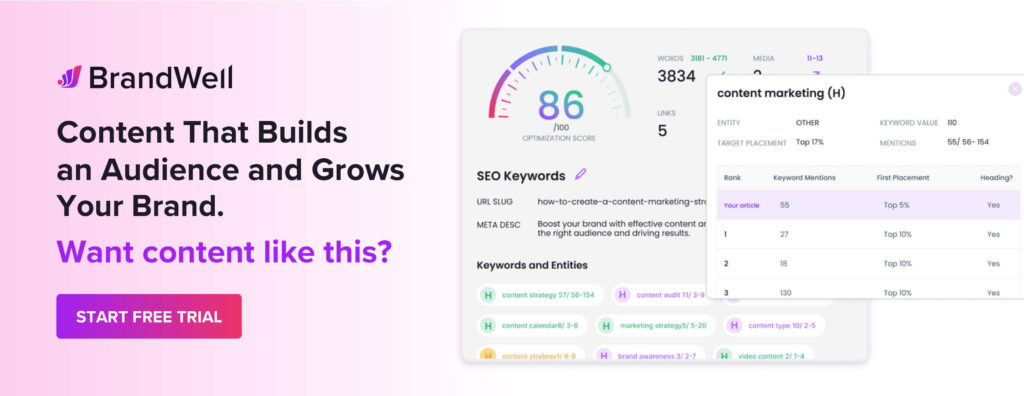Discover top guides, trends, tips and expertise from AIO Writers
20+ Tips on How to Write Compelling Marketing Copy
Jeff Joyce
Friday, 21st Feb 2025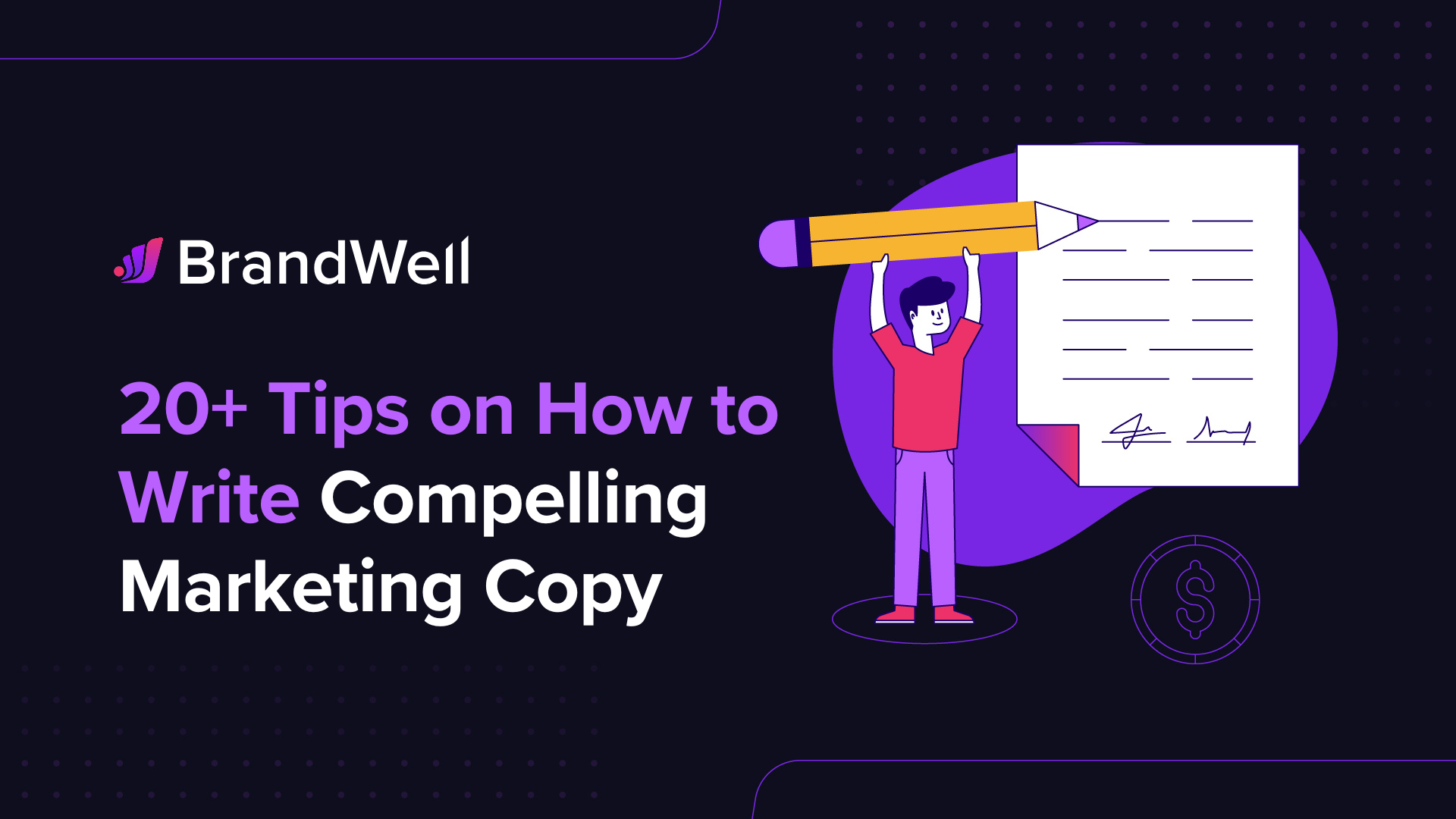
Close to 75% of people would rather skim than read an entire blog post.
In fact, readers stay on a page for only 15 seconds before they move on to something else.
This is why it’s important to learn how to write a compelling marketing copy that keeps your readers hooked.
In this post, I’ll share with you 20+ tips on how to write a compelling marketing copy for optimum impact.
First, let’s define what is marketing copy.
What is Marketing Copy?
If you’ve ever read an ad, a product description, or even a catchy social media post that made you want to click, sign up, or buy, then you’ve experienced marketing copy in action.
Marketing copy is any written content designed to promote a product, service, or brand — and trust me, when it’s done right, it’s powerful.
Good marketing copy isn’t about pushing a sale; it’s about connecting with people, addressing their needs, and guiding them toward a solution (which just so happens to be your product or service).
There are different types of marketing copy, each one designed for a specific purpose.
- Long-Form Copy: Think blog posts, whitepapers, case studies, and ebooks. This type of content is great for educating your audience, building trust, and positioning yourself as an expert.
- Short-Form Copy: Quick and to the point — social media captions, ad copy, email subject lines, and headlines fall into this category. You don’t have much time to grab attention, so every word needs to pack a punch.
- Web Content: This includes landing pages, homepage copy, and product descriptions. Your website is often the first impression people get of your brand, so your content needs to be clear, persuasive, and easy to navigate.
- Social Media Copy: Writing for social media is a whole different ball game. You need to be engaging, conversational, and platform-specific. What works on Twitter might not work on Instagram, so tailor your messaging accordingly.
- Sales Copy: Sales pages, direct response emails, and ad scripts all fall into this category. The goal? Convert leads into customers. This type of copy needs to be ultra-persuasive while still feeling natural and trustworthy.
- Technical Copy: If you’re writing user manuals, product guides, or technical documentation, clarity is key. You want to make complex information easy to understand — without putting people to sleep.
- Press Release: Press releases, media statements, and brand storytelling content help shape public perception. If you want to get your company in the news, your PR copy needs to be polished and newsworthy.
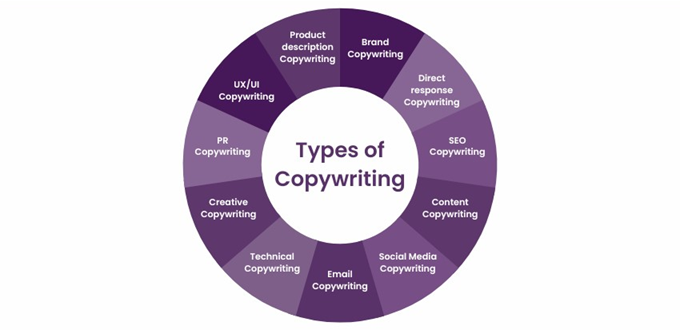
Image source: Knowledge Academy
What Makes Good Marketing Copy?
Alright, so what separates forgettable copy from the kind that makes people take action? Here’s the secret sauce:
- It’s Easy to Read: No one wants to struggle through a wall of text. Keep your copy clear, concise, and skimmable.
- It Solves a Problem: People don’t care about your product — they care about how it can help them. Make sure your copy highlights solutions, not just product specs.
- It Evokes Emotion: Good copy makes people feel something. Excitement, curiosity, urgency — if you can trigger an emotional response, you’re on the right track.
- It Matches Your Brand Personality: Are you fun and playful? Professional and authoritative? Whatever your brand’s vibe is, your copy should reflect that consistently.
- It Has a Clear Call to Action: Never assume people will just “know” what to do next. Spell it out — whether that’s signing up, buying now, or following you on social media.
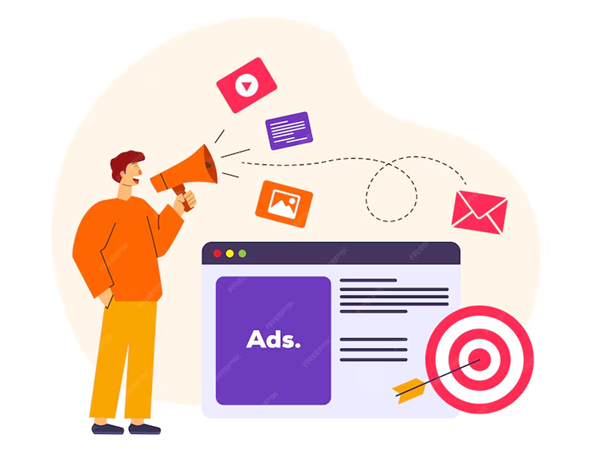
How to Write Compelling Marketing Copy
Now let’s get into the nitty-gritty. Here’s my 23-point guide to writing marketing copy that actually works.
1. Define Your Target Audience
Before you write a single word, you need to know who you’re talking to. What are their pain points? What do they care about?
The more you understand your audience, the more effective your copy will be.
If you try to appeal to everyone, you end up appealing to no one.
Effective copy speaks directly to a specific group of people, addressing their unique needs and desires. Think about demographics such as age, gender, location, income level, education level – anything that will help you pinpoint who exactly it is that you’re trying to reach out to.
Research your audience by using surveys, social media, and customer feedback to learn about their biggest challenges. If you sell camping gear, find out what types of items campers typically look for. Do they prioritize convenience over quality? Are there any particular brands they prefer?
The answers to these questions will be your guide in creating marketing copywriting content that is tailored to this group.
Once you gather insights, create a customer persona that defines your ideal customer’s demographics, interests, and pain points.
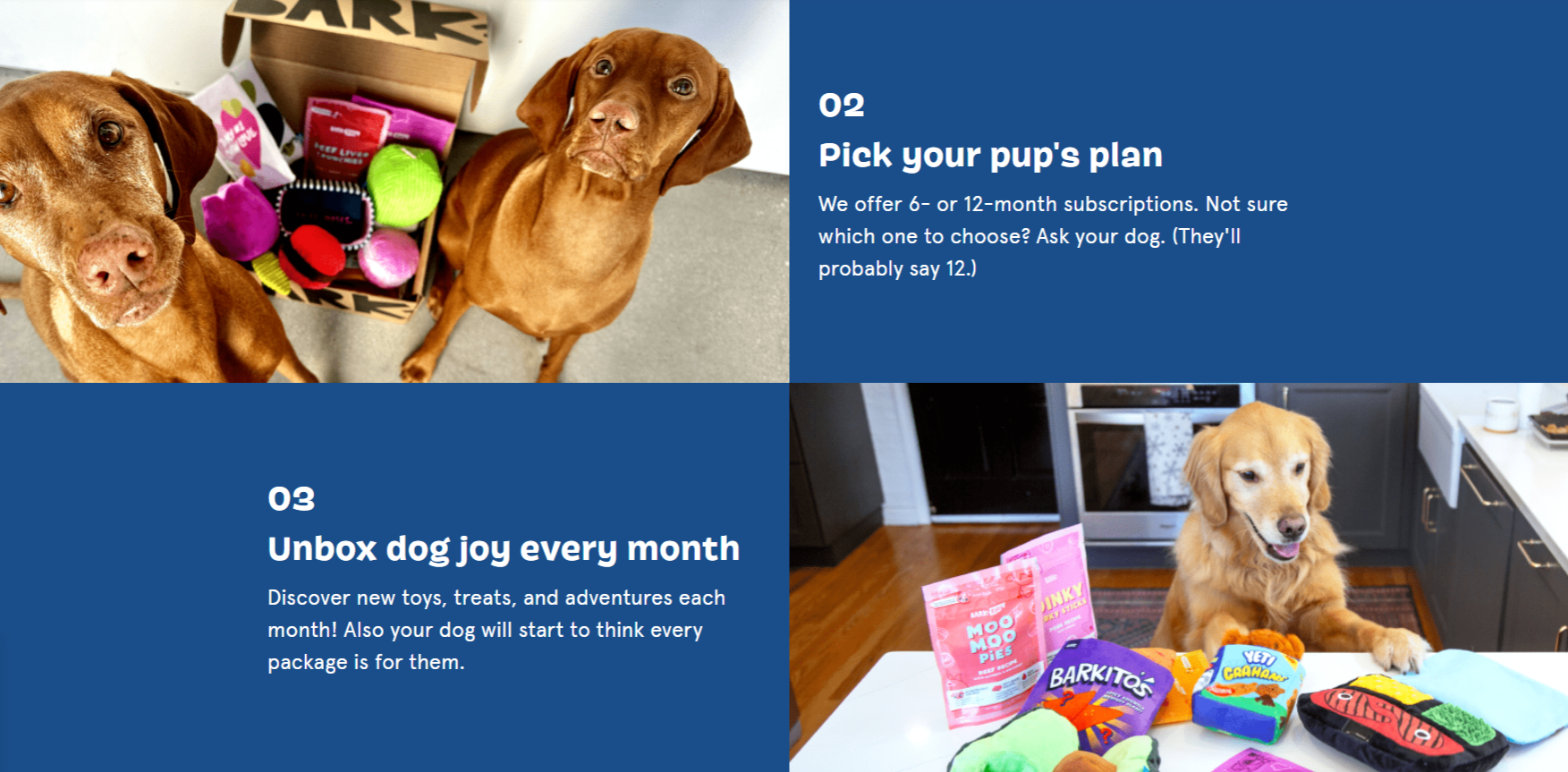
BarkBox clearly knows its audience, with each copy speaking to its target market: woof parents!
2. Set an Objective
What’s the goal of this piece of copy? Are you trying to build brand awareness, generate leads, or drive sales?
Having a clear objective keeps your messaging focused.
If you don’t know your goal, neither will your reader. Every piece of copy should drive a specific action.
Define a measurable outcome, such as “Increase email sign-ups by 20%.” Align your messaging with that goal and keep it simple — one clear goal per piece of copy.
3. Nail the Right Tone
The tone of your copy should match your brand personality and your audience’s expectations.
A legal services firm and a trendy clothing brand will have very different voices — and that’s okay!
Why does tone matter?
Because tone builds trust. If your brand sounds too formal or too casual for your audience, they won’t connect with you.
Define your brand voice — it could be professional, playful, authoritative, or friendly.
Use that tone consistently across all marketing channels, but adapt it based on context. An email campaign might be friendlier than a product manual.
A skincare brand targeting Gen Z might use playful, conversational language: “Say goodbye to breakouts and hello to glow-up skin!” Meanwhile, a luxury hotel brand could go for a more refined tone: “Experience elegance and unparalleled comfort.”
Speak the language of your customers by using the words and phrases they use to describe their problems and desires.
If you’re selling fitness programs, “Lose weight fast” is way too generic. Try “Lose 10 pounds in 30 days without giving up pizza” which speaks directly to an audience looking for fast, realistic weight loss.
Try not to use jargon or slang terms unless they are absolutely necessary as these can make your content seem unprofessional. Idioms or colloquialisms are fine — in fact, they give your content a more personal touch without sacrificing authority.

Oatly has become synonymous with a fun, tongue-in-cheek tone of voice
4. Craft an Engaging Headline
The key to pulling readers to your content is creating an engaging headline. The title is the first thing your audience will see, so it’s either you hook them in or turn them off.
When you write marketing copy, keep the headline short and sweet – long titles can get lost in search engine results pages (SERPs). And make sure to include relevant keywords to improve visibility on SERPs.
Think of something that would grab someone’s attention right away. Use “power words” or phrases like “discover” or “unlock the secrets” to draw people in. You can also use numbers such as “5 Ways To…” or “10 Tips For…”.
If you have a limited number of characters available (like Twitter), then focus on making the most impactful statement possible within those constraints.
Using puns or wordplay can be effective too. Just make sure they are relevant to your topic and not overly cheesy.

One of the best headlines of all time from David Ogilvy
5. Make a Strong Opening
People have short attention spans. Whether it’s a headline, email subject line, or the first sentence of a blog post, make it compelling enough to keep them reading.
If you don’t hook your readers immediately, they’ll move on.
Try opening with an intriguing question or bold statement to capture attention right away. Address a specific pain point and promise value upfront to make it clear why they should keep reading.
For example: Instead of “Improve your writing skills,” say, “Write emails so good your boss will actually reply.”
Use curiosity-driven headlines and add numbers and specific results to make your copy more compelling.

This web copy from GymIt addresses an important pain point
6. Build Interest
Once you have their attention, keep it by painting a picture, sharing a compelling stat, or telling a story.
People love stories because they evoke emotion. By incorporating storytelling techniques into your copywriting, you can make even mundane topics seem exciting.
For example, rather than just showing images of shoes all over your ads, tell a story about your experience wearing them.
Storytelling can make your point more memorable, and adding relatable examples makes your copy feel more personal and engaging.
For example: “I was struggling to write copy that converted — until I discovered this simple trick.”
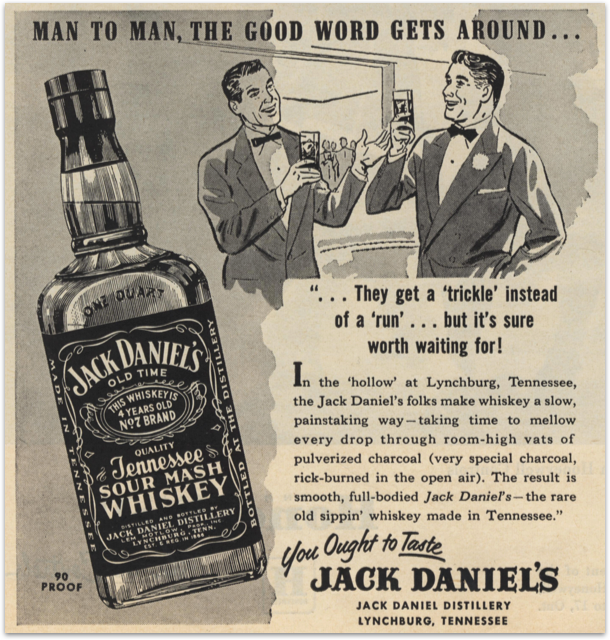
A story-driven ad from Jack Daniel’s
7. Use Active Voice & Action Verbs
Active voice makes your writing more direct and engaging.
“Get more leads” is stronger than “More leads can be generated.”
Passive voice sounds weak and distant, while active voice creates urgency and clarity.
Use strong action verbs like “boost,” “win,” or “transform.” If you find passive sentences in your writing, rewrite them to be more direct and engaging.
For example: Instead of “Your request has been received,” say, “We got your request and are on it!”
8. Put the Reader First
It’s not about you — it’s about them.
Readers don’t care about your company. They care about how you can help them.
Use “you” more than “we” in your copy and always frame your message around the reader’s needs.
Focus on the reader’s problems and provide clear solutions.
For example: Instead of “We offer the best accounting software,” say, “You’ll save hours on bookkeeping with our easy-to-use accounting software.”
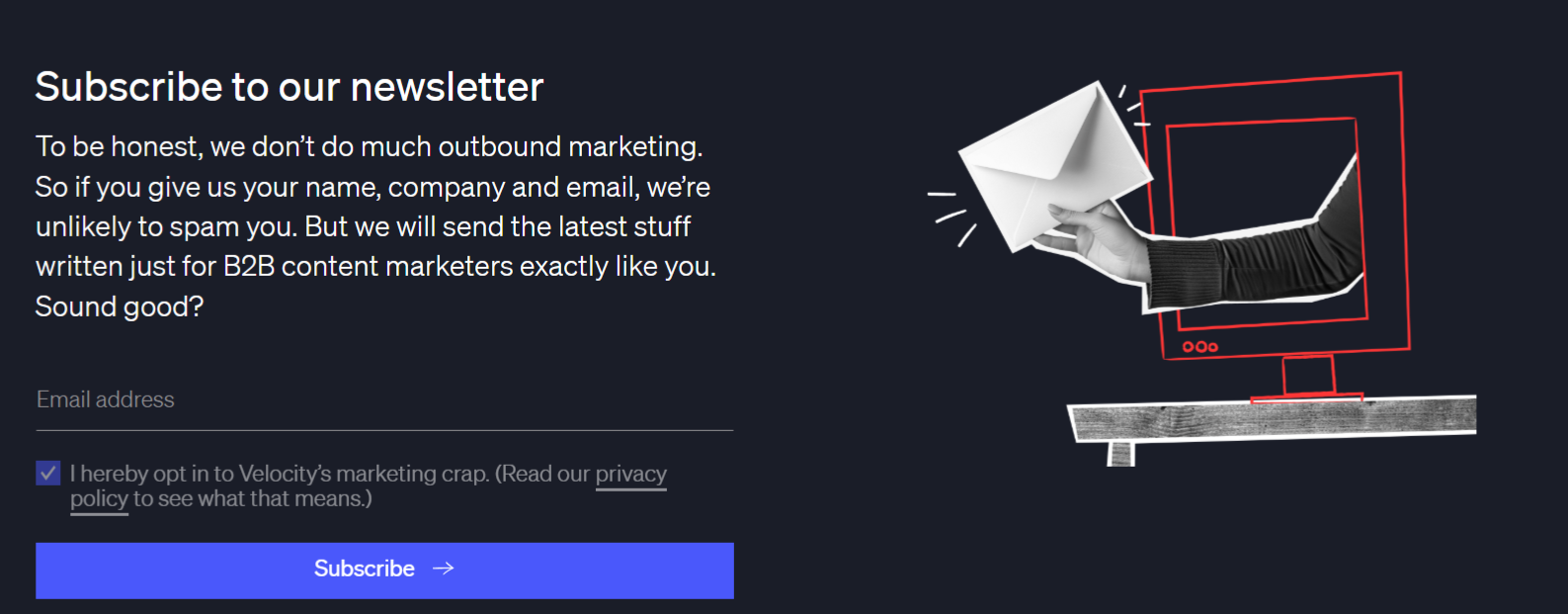
People hate spam emails, and Velocity Partners knows this.
9. Agitate the Problem
Once you’ve identified a problem your audience faces, don’t just jump straight to the solution.
First, amplify the pain. Show them the consequences of not addressing the issue.
People take action when they feel discomfort. Agitating the problem makes your solution feel urgent and necessary.
The more they feel the problem, the more they’ll want a fix.
Describe the frustration, consequences, or missed opportunities that come with ignoring the problem. Use emotional triggers to make it feel real and urgent.
For example: Instead of “Struggling to get more leads? Try our tool,” say, “Every day you’re losing potential customers to competitors who know how to convert better. Stop wasting your marketing budget—fix your funnel today.”
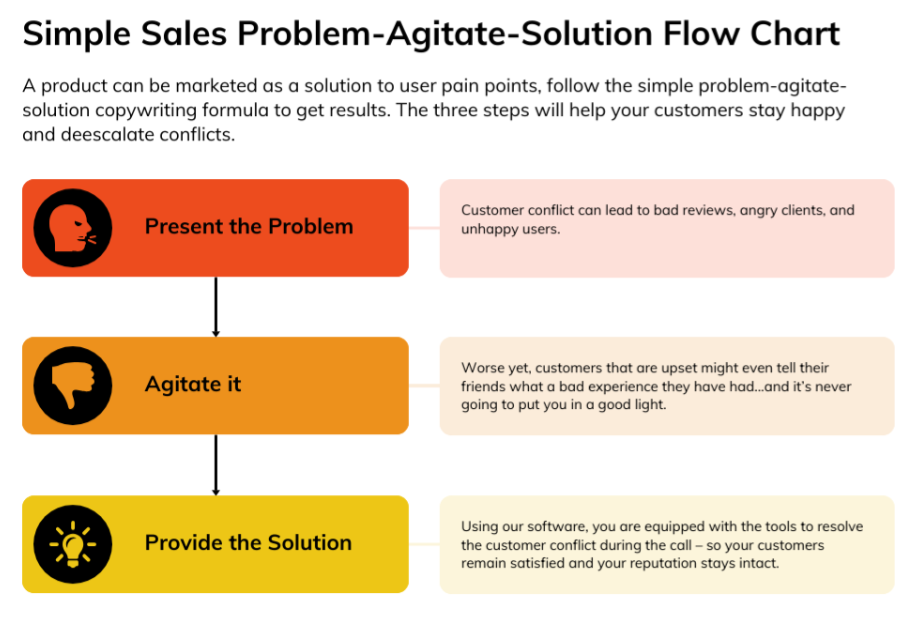
Image source: Venngage
10. Solve the Problem
Once you’ve made the problem feel real, present your solution in a way that’s simple and easy to understand.
Don’t make people work to figure out how your product or service helps them.
Position your product or service as the perfect answer to their problem.
Show how your product or service makes life easier. Support your claims with proof, such as testimonials, case studies, or product demos.
For example: “Our scheduling tool automates your posts, so you get engagement without the headache.”
Learn more about the Problem-Agitation-Solution (PAS) framework for copywriting.
11. Create Urgency
People procrastinate — if there’s no reason to act now, they probably won’t.
Your job is to nudge them into action.
Urgency pushes people past hesitation. This is why limited-time offers, countdown timers, and scarcity tactics work well.
Use time-sensitive language, like “Offer ends in 12 hours,” to encourage immediate action.
Highlight scarcity, such as “Only 3 spots left!” to increase demand.
For example: “Sign up now — this deal disappears at midnight!”

Websites like Booking.com are great at triggering a sense of urgency among visitors
12. Highlight Benefits, Not Just Features
Customers care about how your product improves their life, not just what it does.
If you’re listing down features, you’re only describing what your product does.
People buy solutions, not just specifications. Instead of features, write down the benefits and explain how your product actually helps the customer.
For every feature you mention, ask: “So what?” Then, turn that into a benefit.
For example: Instead of “Our phone has a 5000mAh battery,” say, “Go all day without worrying about your phone dying.”
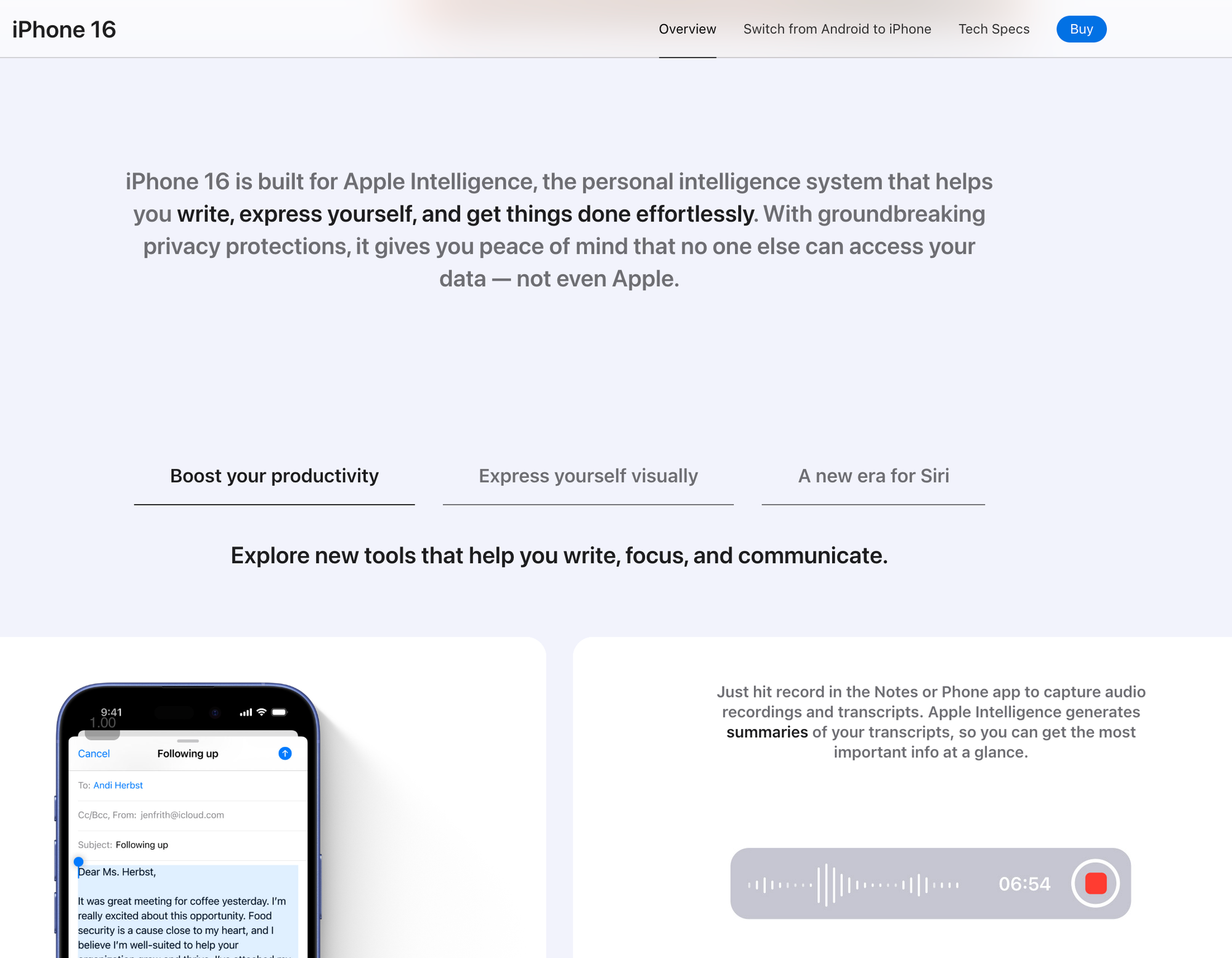
Instead of listing down the features of the new iPhone, Apple sells you the experience
13. Back It Up with Data
No matter how many benefits you highlight, without proof your audience may be skeptical.
People trust numbers, studies, and real-world examples. Data adds credibility to your claims and makes your copy more convincing.
Mention statistics, case studies, testimonials, or expert opinions to support your claims. Be specific and avoid vague statements.
For example: Instead of “Our software improves productivity,” say, “90% of users report a 3x increase in productivity within the first month after using our software.”
14. Use Analogies and Metaphors
If your product or service is hard to explain, analogies can make it more digestible.
People understand new concepts better when you compare them to something familiar.
Compare abstract concepts to everyday experiences, like: “Our AI chatbot is like a personal assistant that works 24/7 without needing coffee breaks.”

Tabasco uses visual metaphor to illustrate how hot this bottle is extremely hot
15. Embrace Humor (When Appropriate)
A little humor can make your brand more enjoyable and memorable.
People enjoy content that makes them smile, and humor helps your message stand out.
Adding humor to your copy helps create an emotional connection with your reader while lightening up potentially dry topics.
Use lighthearted language, playful phrasing, or witty comparisons where appropriate.
A great way to add wit without detracting from the message is to use puns and metaphors. Just don’t overdo it if you want to be taken seriously.
For example: “Our coffee is so strong, it practically writes your emails for you.”
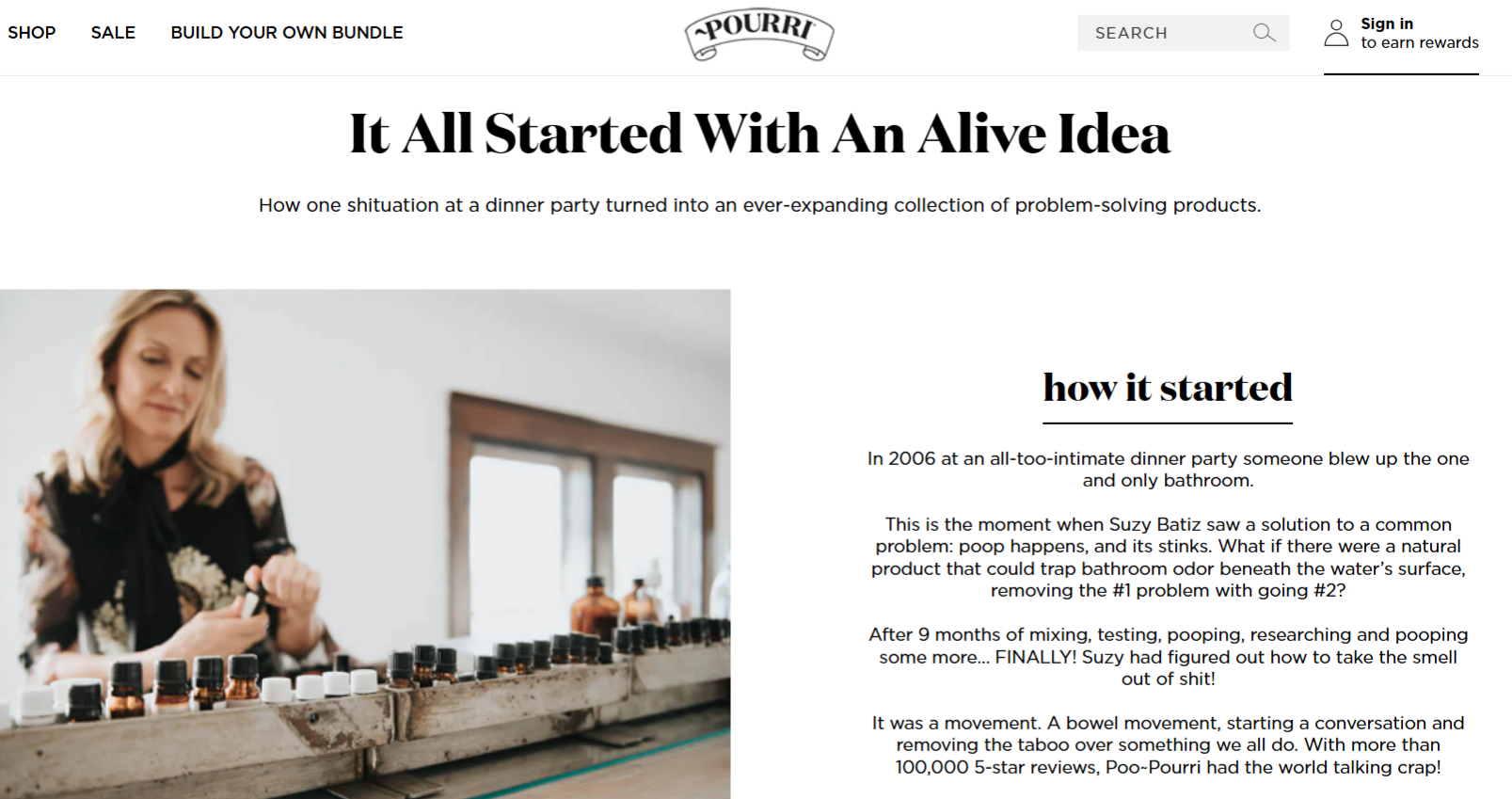
Pourri uses humor to sell a solution for a difficult (and embarrassing!) problem
16. Don’t Pander
Pandering is when you try too hard, or are overly flattering, in an attempt to win someone over.
Be enthusiastic, but don’t overdo it. Customers can tell when you’re being fake or exaggerating.
Instead of using big words (which can often confuse readers), focus on providing valuable information while keeping things simple.
Make sure everything you write is relevant and useful for your target audience — even if some topics may seem boring.
Deliver real value instead of empty flattery or sensationalism which won’t do anything other than waste people’s time.
For example: Instead of “You’ll make a million dollars overnight!” say, “Increase your revenue with these 10 proven strategies.”
17. Keep It Simple
The best marketing copy is clear and concise. Don’t use big words just to sound smart.
If your message is too complex, people will lose interest.
Write at a middle-school reading level while using short sentences. Avoid industry jargon.
For example: Instead of “Utilize our cutting-edge technology to enhance operational efficiency,” say, “Get more done in less time with our smart tools.”
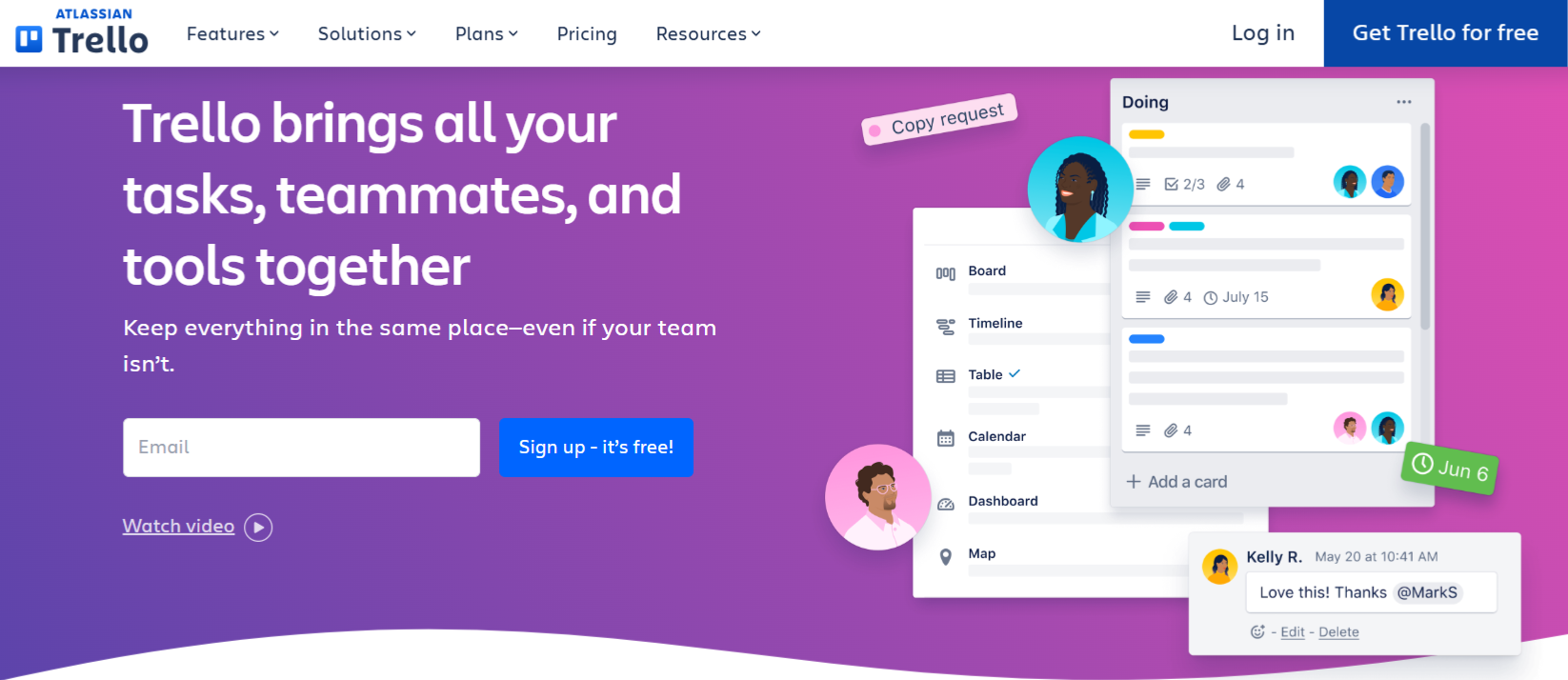
Trello‘s copy is clear and concise
18. Use Your Customer’s Own Words
Your customers’ words are more powerful than anything you could write yourself.
Testimonials, reviews, and case studies provide social proof, showing potential buyers that real people have benefited from your product or service.
People trust other people more than they trust brands. A glowing review from a satisfied customer carries more weight than a company’s marketing message.
Testimonials build credibility and reduce skepticism, making your copy more persuasive.
Incorporate customer testimonials that highlight specific results and benefits. Use direct quotes from reviews and case studies to demonstrate how your product solves real problems.
Feature reviews in key areas like landing pages, emails, and sales copy to reinforce trust.
For example: Instead of saying, “Our tool helps businesses grow,” include a customer quote: “Since using this tool, our revenue has increased by 30% in just three months!”
Speaking in your customer’s language makes your copy more relatable and effective.
For example: “I saved 10 hours a week using this tool — it’s a lifesaver!”
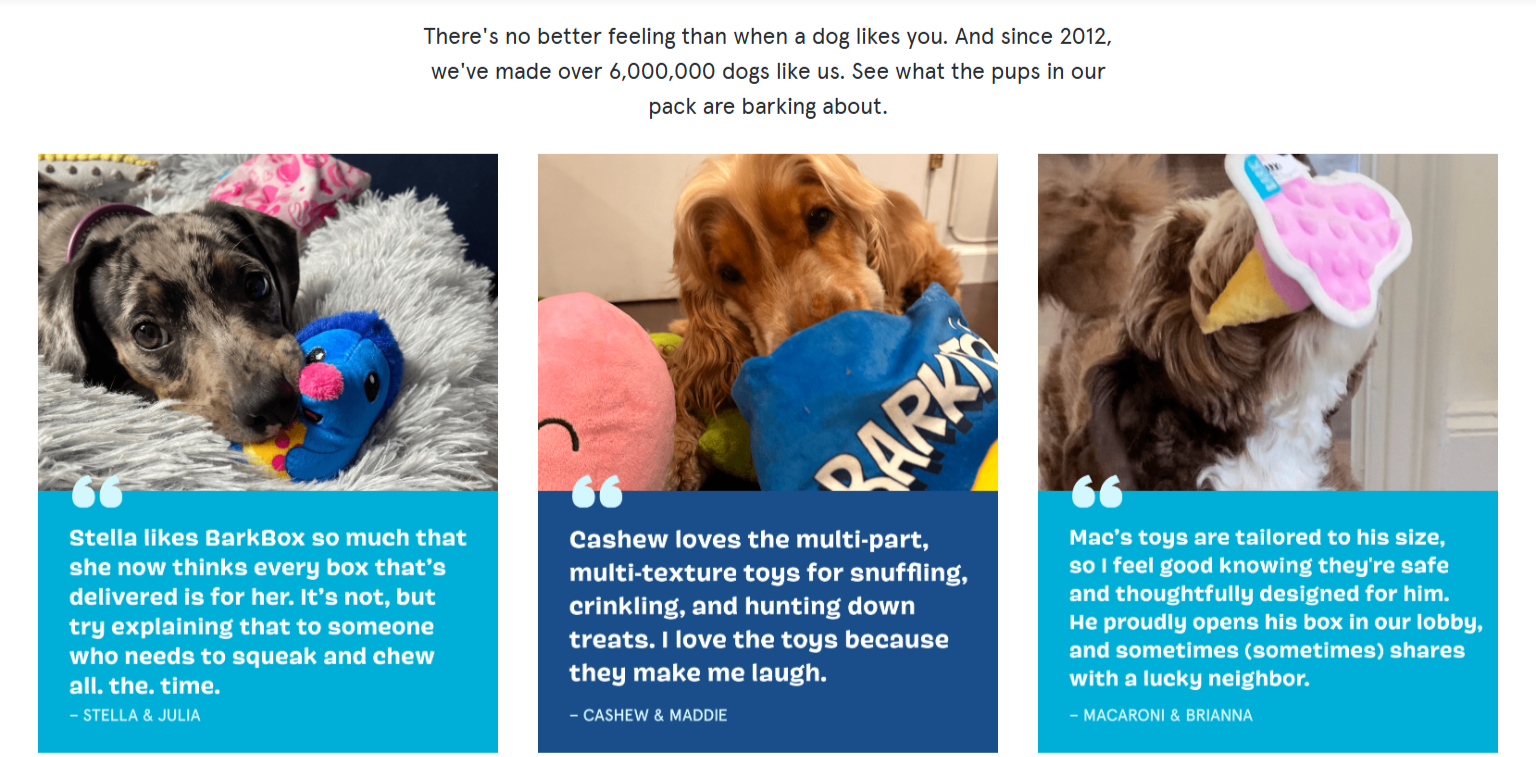
How BarkBox uses social proof
19. Let Your Personality Shine
Your brand’s personality is what makes you stand out in a crowded market. People connect with brands that feel human, so don’t be afraid to let your unique voice shine through in your copy.
Customers don’t just buy products; they buy experiences and relationships. A brand with personality feels more authentic, relatable, and memorable. Whether your tone is witty, friendly, or authoritative, consistency in your brand voice builds trust and keeps your audience engaged.
Write the way you talk. If your brand is fun and playful, don’t be afraid to crack a joke or use casual language. If you’re more professional and authoritative, maintain a confident and polished tone.
The key is to be genuine — trying too hard to be quirky or humorous when it doesn’t fit your brand can feel forced.
For example: A playful coffee brand might say, “We know Mondays suck, but at least our coffee makes them better.” Meanwhile, a high-end financial service might say, “Your future deserves expert planning—let’s build it together.”
See the difference?
Here’s another example: Instead of “We provide customer support,” say, “We’re here to help — day or night. Even on Sundays.”
The more authentic you are, the more your audience will feel connected to your brand.
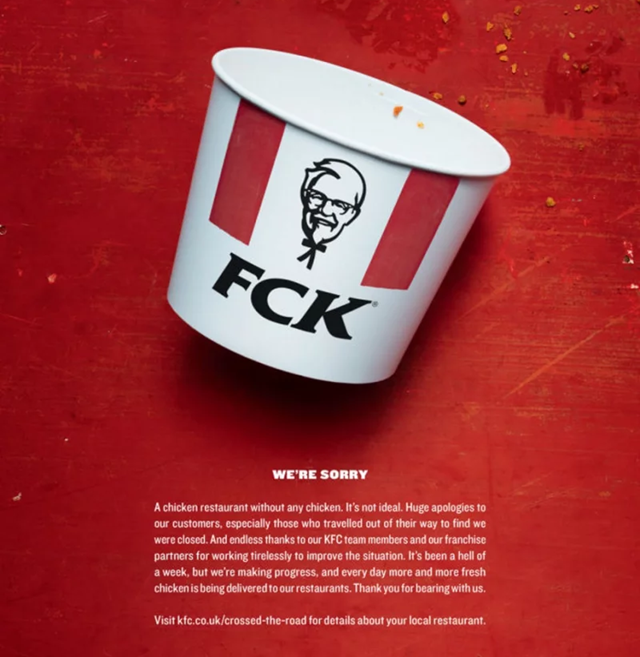
How KFC responded to a crisis through clever messaging
20. Use Psychology to Influence Decisions
People make decisions based on emotions and then justify them with logic. If you understand what motivates your audience, you can write copy that speaks to their subconscious desires and drives them to take action.
Psychological triggers like reciprocity, FOMO (fear of missing out), and authority can significantly impact decision-making. By tapping into these principles, you can write marketing copy that subtly encourages action without feeling pushy.
Use the principle of reciprocity by offering something valuable for free — like a downloadable guide or a free trial — to create a sense of obligation.
Social proof with testimonials, case studies, and user-generated content shows people that others trust your product.
Create urgency with time-sensitive offers to trigger FOMO and encourage immediate action.
For example: Instead of “Sign up for our newsletter,” say, “Join 50,000+ marketers getting weekly growth hacks that double conversions.”
This taps into social proof and exclusivity, making it more persuasive.
By weaving psychology into your copy, you can make your message feel more natural and persuasive without resorting to hard-sell tactics.
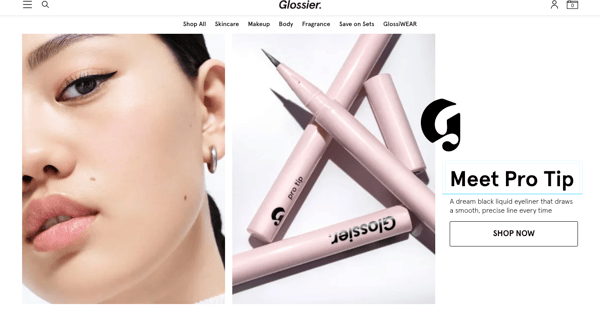
Glossier uses authority to establish the credibility of its product (designed for professionals)
21. Incorporate Visual Elements
Visuals can be an extremely potent asset when it comes to writing marketing copy.
Graphical elements such as images, videos, and infographics can be highly effective tools for crafting engaging content.
When adding visuals to your content piece, choose images that accurately represent the topic at hand. Make sure they’re relevant and high-quality — otherwise, you risk turning off readers before they even get a chance to read what you have written.
Consider using videos or infographics as these types of visuals can provide a lot of value in a short amount of time and help keep people interested in what you’re writing about.

Figma shows what’s possible while displaying its design prowess
22. Build Your Message Around Your CTA
Every piece of marketing copy should have a clear call-to-action (CTA) at its core. Your message should naturally guide the reader toward taking the desired action, whether that’s signing up for a newsletter, making a purchase, or requesting a demo.
A well-structured CTA ensures that your audience knows exactly what step to take next. If your message isn’t aligned with your CTA, you risk losing engagement and conversions. A strong CTA removes any ambiguity and makes the decision-making process easier for the reader.
To make your CTA truly compelling, it should feel like a seamless extension of your copy rather than an afterthought.
Start by identifying the primary goal of your copy and craft your message around it. Use persuasive language that builds up to your CTA, reinforcing its value throughout your content.
Highlight benefits and use testimonials or reviews to add credibility and reassurance.
Position the CTA prominently so it’s easy to find, and use action-driven language to encourage immediate response.
For example: Instead of a generic “Click here,” try, “Start your free trial today and see why 10,000+ businesses trust our software!”
Adding social proof reinforces trust and makes the action more enticing.
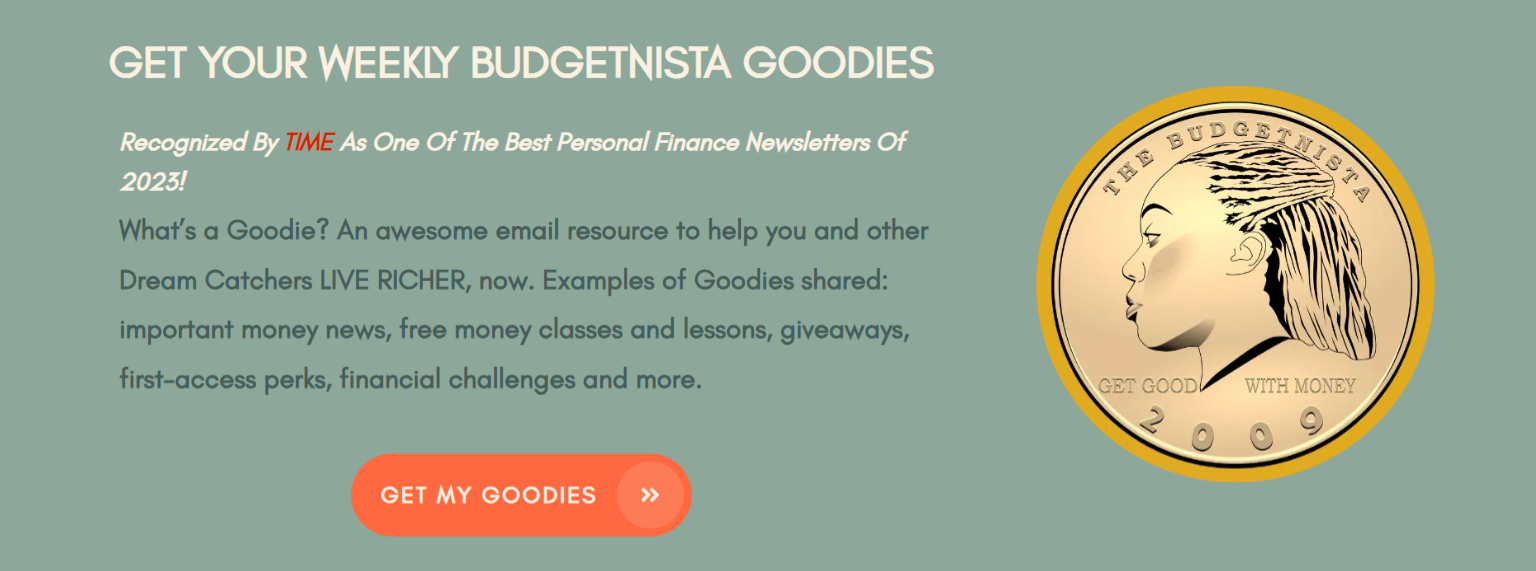
Finance can be a boring topic, but The Budgetnista makes use of the more catchy “Get My Goodies” CTA rather than simply saying “Sign up for my newsletter”
23. Always A/B Test Your Copy
Even great copy can be improved. Testing helps you see what resonates best with your audience.
Remember: what works for one audience might not work for another.
Test different headlines, CTAs, and tones to optimize performance.
You can run two versions of a landing page — one with a humorous tone and one with a serious tone — to see which converts better.
My final word: stay authentic throughout all your content creation efforts, both online and offline. Don’t try too hard with gimmicks or tricks just because they seem like good ideas. Focus on being genuine in whatever message you are trying to deliver.
At the end of the day, writing great marketing copy is part art, part science. It takes creativity, psychology, and a deep understanding of your audience. But the more you practice, the better you’ll get.
So go ahead — write, test, tweak, and refine until your copy makes an impact!
FAQs: How to Write Compelling Marketing Copy
How to write a compelling copy?
To write compelling copy, follow these key principles:
- Know your audience – Understand their pain points, desires, and motivations.
- Craft a strong hook – Grab attention with a bold statement, question, or intriguing fact.
- Focus on benefits – Highlight how your product/service improves the reader’s life rather than just listing features.
- Use persuasive language – Incorporate power words, storytelling, and emotional triggers.
- Keep it clear and concise – Avoid fluff; every word should serve a purpose.
- Include a strong CTA – Clearly direct the reader to take action (buy, sign up, click, etc.).
In what order should you write a marketing copy?
While there’s no strict formula, this structure often works best:
- Research – Understand your audience, competitors, and product benefits.
- Hook – Start with an attention-grabbing headline.
- Problem & Solution – Identify the problem and position your product/service as the solution.
- Benefits & Features – Highlight the key benefits first, then support them with features.
- Social Proof – Add testimonials, reviews, or case studies to build trust.
- Call to Action (CTA) – End with a clear, compelling action step.
How to write a good advertising copy?
- Speak directly to your audience – Use “you” to make it personal.
- Make it emotionally appealing – People buy based on emotion and justify with logic.
- Use simple, persuasive language – Avoid jargon and keep sentences short.
- Create urgency – Use time-sensitive words like “limited-time offer” or “don’t miss out.”
- A/B test your copy – Experiment with different versions to see what resonates best.
What is writing marketing copy?
Marketing copy is the written content used to persuade an audience to take a desired action. It appears in ads, landing pages, emails, product descriptions, and social media. The goal is to drive engagement, conversions, and sales by clearly communicating value and benefits.
Conclusion
Great marketing copy isn’t just about sounding clever — it’s about understanding your audience, addressing their needs, and guiding them toward action. By using the strategies outlined here, you can craft copy that not only captures attention but also drives conversions.
If you need help writing your next ad copy, BrandWell can help.
BrandWell’s generative AI model is trained to write high-quality marketing copy for any format — whether it’s sales letters, emails, blog posts, landing pages, or press releases.
Let AI handle the heavy lifting so you can focus on strategy and creativity. Try BrandWell today and see how effortlessly you can scale your content creation!

UNLOCK YOUR POTENTIAL
Long Headline that highlights Value Proposition of Lead Magnet
Grab a front row seat to our video masterclasses, interviews, case studies, tutorials, and guides.

